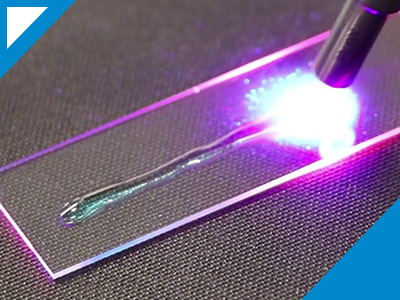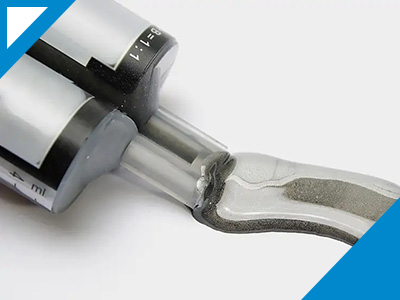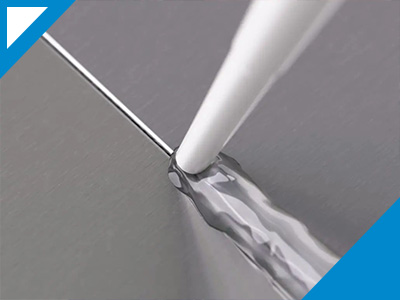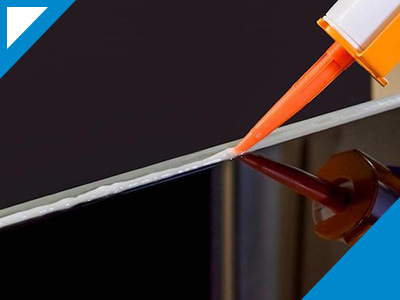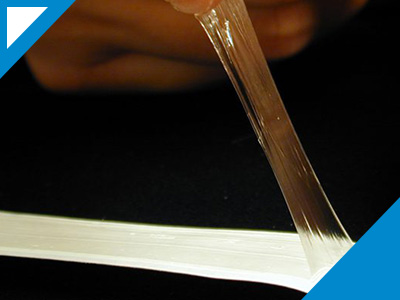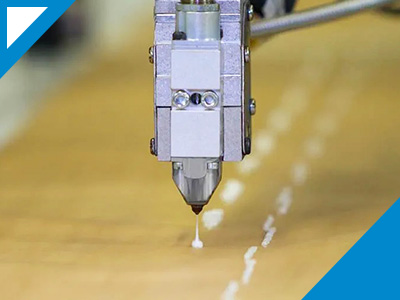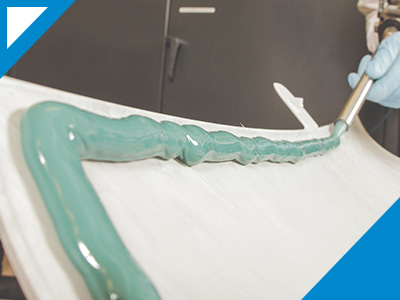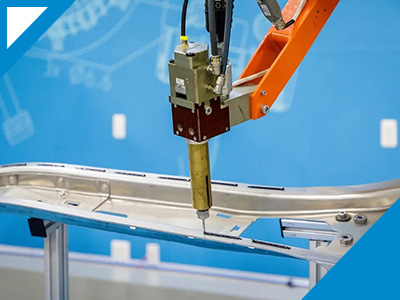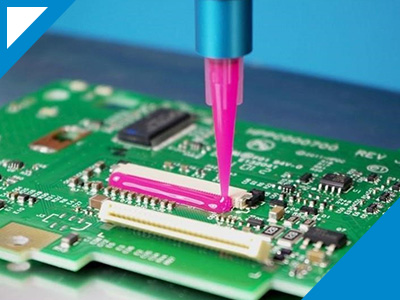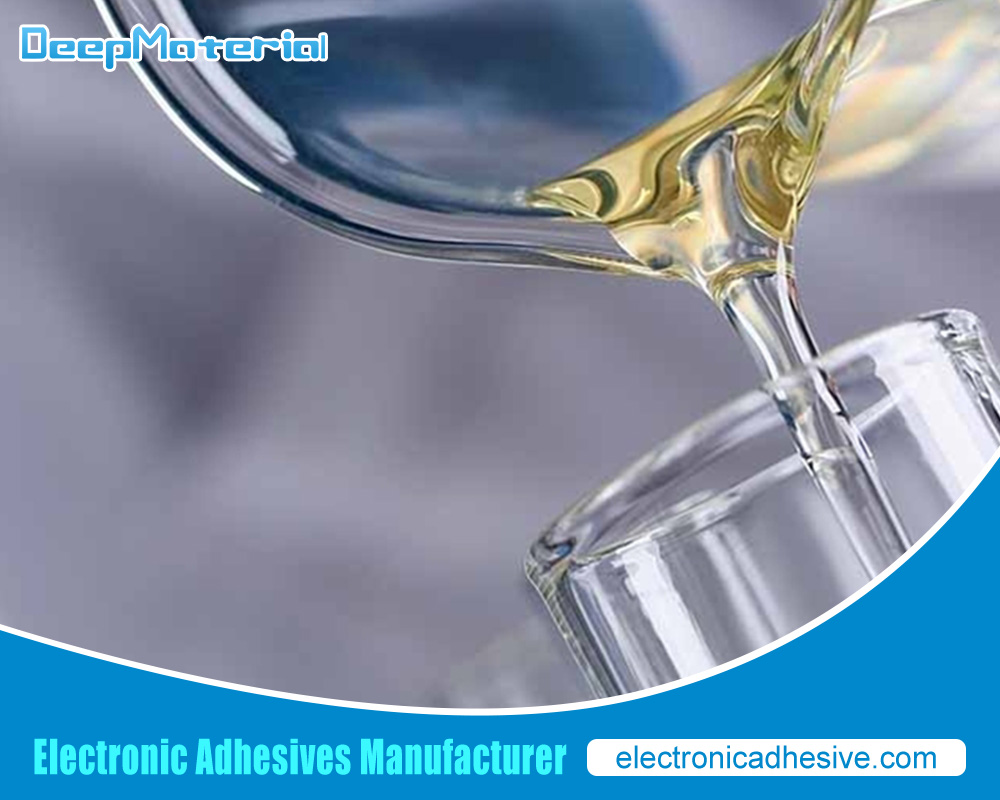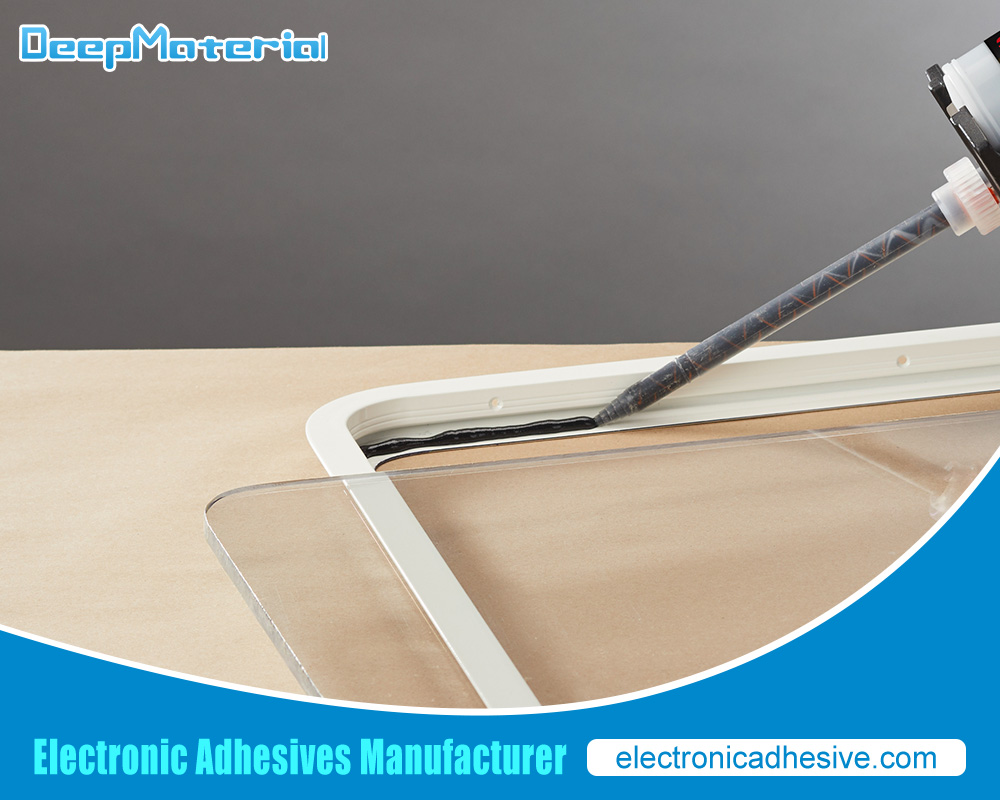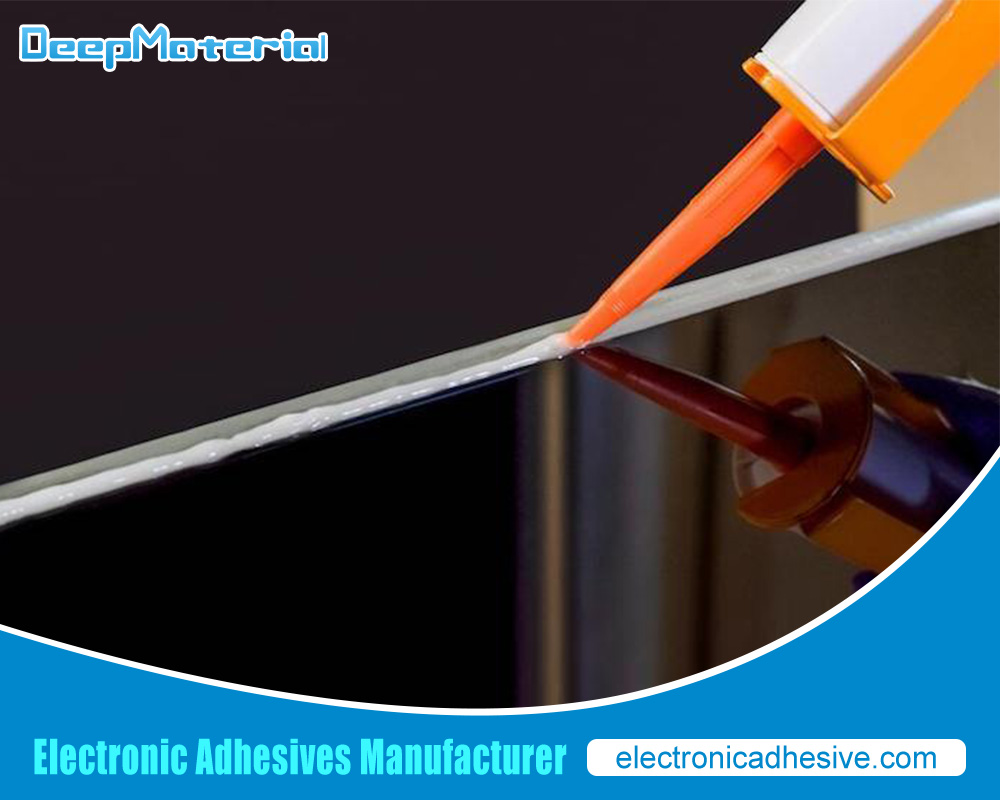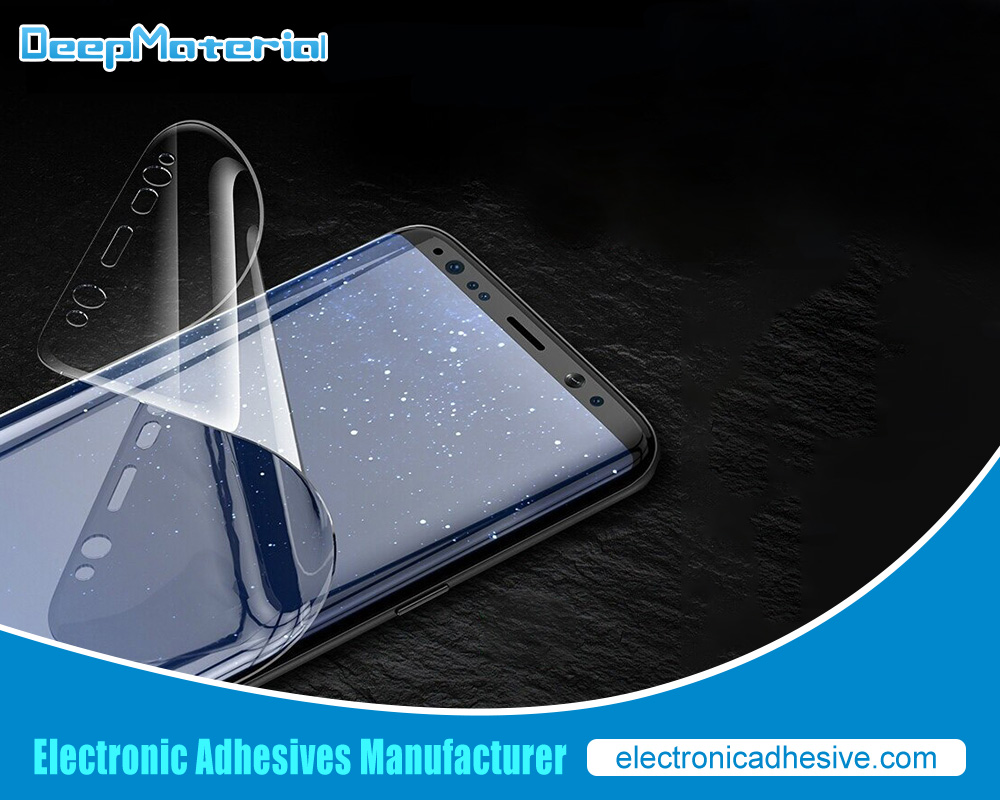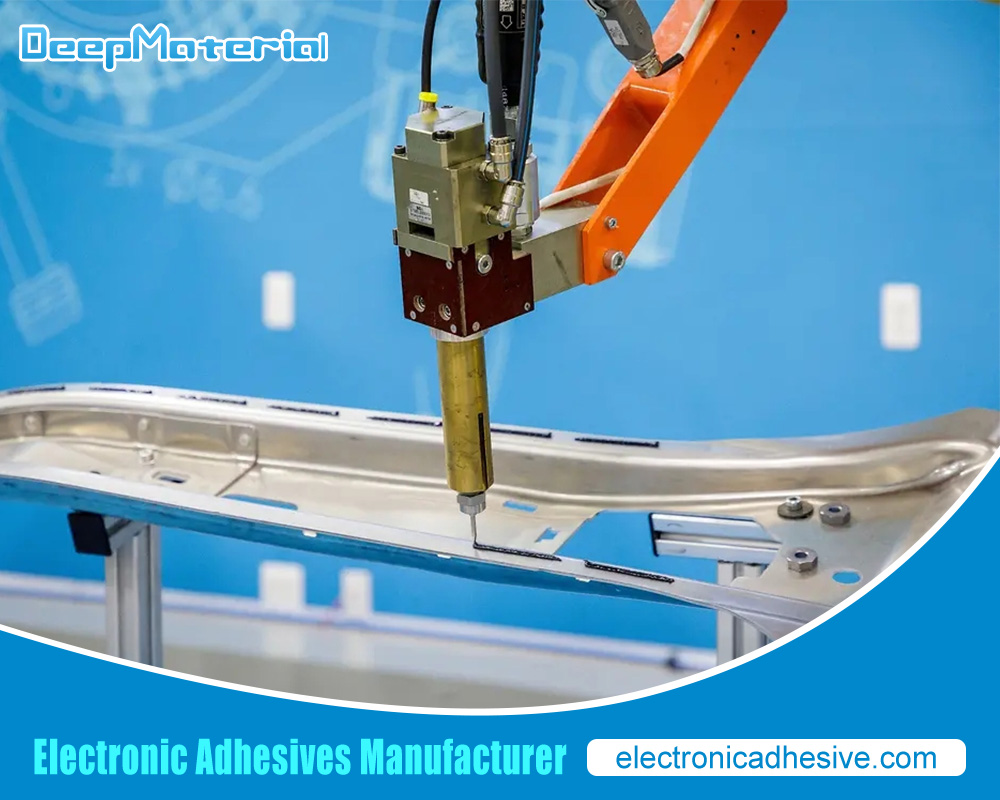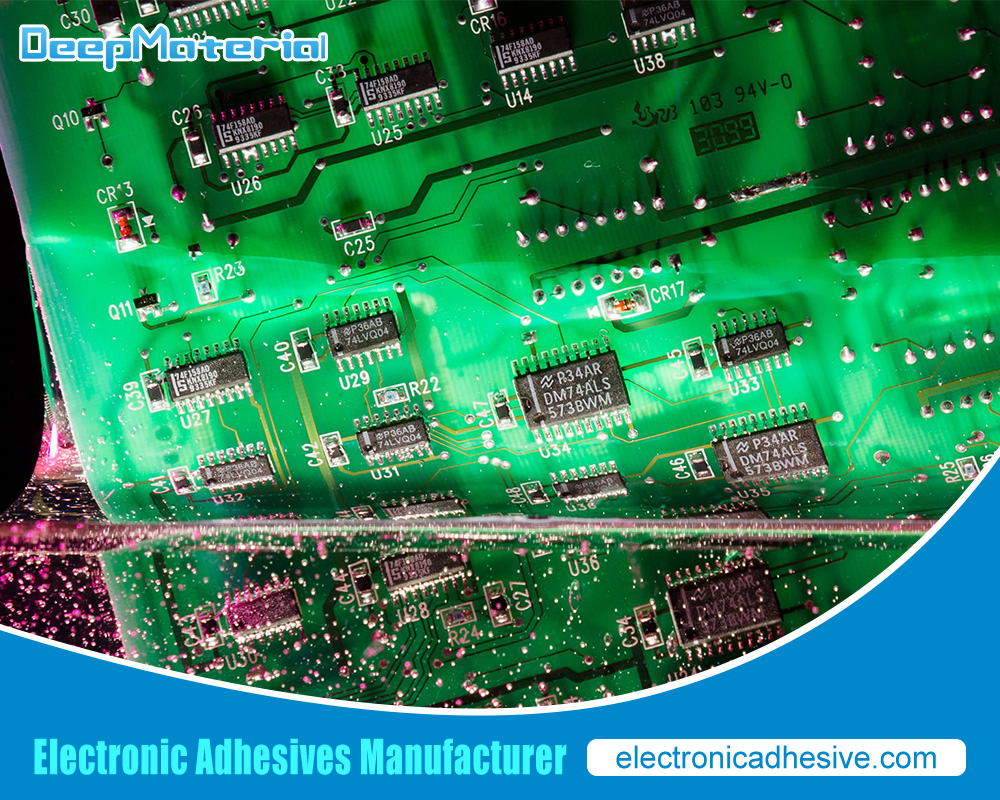Appliance Adhesives

Appliance adhesive is a powerful tool that can make life easier. Appliance adhesive has many practical applications in our daily lives, from repairing appliances to creating DIY projects. It is a type of adhesive specifically designed to bond different surfaces, making them more durable and long-lasting.
Appliance adhesive has come a long way since its early beginnings and is now available in various types and formulations to cater to different needs. Whether you want to repair an appliance or create something new, appliance adhesive can be a game-changer.
This article will explore the different types of appliance adhesives, their uses, and how they can help you save time and money. We will also discuss the environmental impact of appliance adhesive and the safety precautions you must take when using it. So, whether you are a DIY enthusiast or a professional, read on to discover the power of appliance adhesive and why it is a must-have for every household.
Appliance Adhesive: What It Is and What It Does
Appliance adhesive is a glue or bonding material used to attach or bond various household appliances to different surfaces. This type of adhesive is designed to provide a strong, durable, and long-lasting bond that can withstand exposure to heat, moisture, and other environmental factors.
Appliance adhesive is commonly used in the manufacturing and repair of appliances such as refrigerators, washing machines, dryers, dishwashers, and stovetops. It can bond various parts of an instrument, including the door gaskets, handles, control panels, and other components.
The adhesive is typically made from a combination of synthetic resins, polymers, and solvents, and it is formulated to have specific properties such as high adhesion strength, flexibility, and resistance to heat and moisture. Different types of appliance adhesive may also have additional features such as UV resistance or the ability to bond dissimilar materials.
The History of Appliance Adhesive: From Early Beginnings to Modern Applications
Appliance adhesive has a long and exciting history, dating back to the early days of human civilization. Over time, various types of adhesive have been developed to suit different purposes, with technological advancements leading to more advanced and efficient products. Here’s a brief overview of the history of appliance adhesive:
Early Beginnings:
The first known adhesive was made from tree sap, which was used to attach stone tools to wooden handles over 70,000 years ago. Later, the ancient Egyptians used a mixture of animal glue and water to bond papyrus sheets together. In ancient Rome, glue made from animal hides was used for various purposes, including bookbinding, construction, and even as a hair gel.
Middle Ages:
During the Middle Ages, a type of glue made from animal hides and bones called “gelatin glue” was commonly used. This adhesive was solid and durable, making it ideal for bookbinding, woodworking, and leatherworking.
Industrial Revolution:
With the onset of the Industrial Revolution, new types of adhesive were developed, including rubber cement, epoxy, and cyanoacrylate. These adhesives were much more robust and versatile than previous versions and found a variety of applications in industry and manufacturing.
Modern Applications:
Today, appliance adhesive is used in various applications, from construction and manufacturing to automotive and aerospace industries. Modern appliance adhesive is formulated to be strong, durable, and resistant to multiple environmental factors, including temperature, moisture, and chemicals.
Some common types of appliance adhesive include:
- Epoxy: A two-part adhesive that cures to a powerful, rigid bond.
- Cyanoacrylate is a fast-curing adhesive that forms a strong bond between two surfaces.
- Silicone: A flexible, waterproof adhesive that is ideal for use in high-temperature environments.
- Polyurethane: A robust and durable adhesive that can be used to bond a variety of materials, including wood, metal, and plastic.
The history of appliance adhesives is a fascinating story of human innovation and ingenuity. From simple tree sap to modern polyurethane, adhesive technology has come a long way, and we can expect even more exciting advancements in the future.
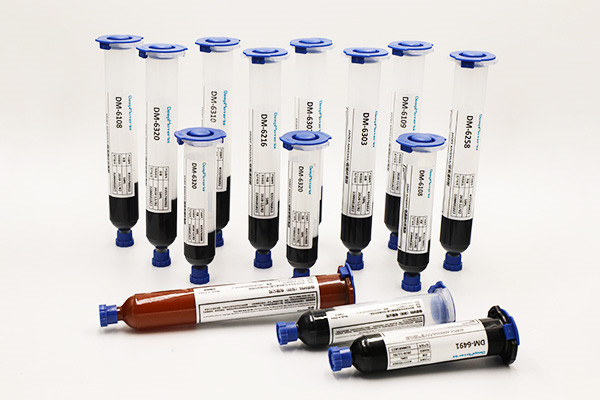
Different Types of Appliance Adhesive and Their Uses
Different appliance adhesives are available in the market, each designed for specific purposes. Here are some of the most common types of appliance adhesive and their uses:
- Silicone Adhesive: This type of adhesive is used for high-temperature applications, such as bonding appliances in ovens, stoves, and other high-heat areas. It is also used for bonding glass and other non-porous surfaces.
- Epoxy Adhesive: Epoxy adhesive is a two-part adhesive used to bond appliances to metal surfaces. It is commonly used in automotive and industrial applications.
- Polyurethane Adhesive: This adhesive is used for bonding appliances to wood, plastic, and other porous surfaces. It is also used for bonding appliances in humid environments.
- Cyanoacrylate Adhesive: Also known as super glue, this adhesive is used for bonding appliances in small areas, such as electronics or jewelry.
- Hot Melt Adhesive: Hot melt adhesive is a thermoplastic adhesive that is melted and applied to the surface to bond. It is commonly used for bonding appliances in the packaging industry.
- Pressure Sensitive Adhesive: This adhesive is used for bonding appliances in the automotive industry. It is also used for bonding appliances in the medical and electronics industries.
When choosing an appliance adhesive, it is essential to consider the surface materials and the environment in which the appliance will be used. Following the manufacturer’s instructions for proper use and application is also necessary.
How to Choose the Right Appliance Adhesive for Your Needs
Here are some factors to consider when selecting an adhesive for your appliance needs:
- Type of appliance: Different types of appliances may require different adhesives. For example, a bond that works well for bonding plastics may not work well for bonding metal or glass.
- Material compatibility: Check the compatibility of the adhesive with the materials that your appliance is made of. The adhesive should be able to bond with the appliance’s surface without damaging or compromising its integrity.
- Strength requirements: Determine the strength requirements for your appliance. Some adhesives are more robust than others and may be necessary for appliances that withstand heavy loads or frequent use.
- Environment: Consider the environment in which the appliance will be used. Some adhesives may perform poorly in extreme temperatures or high humidity, while others may be specifically designed for these conditions.
- Cure time: Cure time could be a significant factor depending on your production process. Some adhesives may require some time to cure before the appliance can be used, while others may have a shorter cure time.
- Safety and health concerns: Ensure the adhesive is safe to use and that the application won’t pose a health risk to workers or consumers. Consider the need for protective equipment such as gloves or masks when working with certain adhesives.
- Application method: Consider the method you will use to apply the adhesive. Some adhesives are designed for specific application methods, such as spray or brush, and may not work well with other methods.
Considering these factors, you can choose an appliance adhesive that meets your needs and ensures a reliable bond between the components.
The Benefits of Using Appliance Adhesive for Repairs
Using appliance adhesive for repairs offers several benefits, including:
- Strong Bonding: Appliance adhesives provide a solid and durable bond that can withstand the harsh conditions of an appliance, such as high temperatures and vibrations.
- Resistance to Moisture: Many appliance adhesives are resistant to moisture, making them ideal for repairs in areas frequently exposed to water, such as around the dishwasher or washing machine.
- Easy to Apply: Appliance adhesives are typically easy to apply and do not require special equipment or expertise. This makes them an excellent choice for DIY repairs.
- Versatility: Appliance adhesives can be used to repair various materials, including metal, plastic, and rubber. This makes them a versatile option for many different types of appliance repairs.
- Cost-effective: Using appliance adhesive for repairs can be a cost-effective option compared to replacing the entire appliance or hiring a professional.
How Appliance Adhesive Can Save You Money in the Long Run
While it may seem unnecessary at first, using appliance adhesive can save you money in the long run. Here are some reasons why:
- Prevents costly repairs: When appliances are not correctly secured, they can become loose and wobbly, which can cause damage to the appliance itself and the surrounding areas. Appliance adhesive can help prevent this by securely bonding the appliance to its surface, reducing the risk of damage and the need for costly repairs.
- Increases the lifespan of appliances: Appliances that are adequately secured and well-maintained can last longer than those that are not. Using appliance adhesive to connect your devices can help extend their lifespan and reduce the need for costly replacements.
- Reduces energy costs: Loose appliances can also cause energy inefficiencies. For example, an open refrigerator door can cause cold air to escape, leading to higher energy bills. Using appliance adhesive to secure the door can help reduce energy costs over time.
- Versatility: Appliance adhesive can be used for household repairs beyond just appliances. It can be used to repair cracked tiles, seal gaps, and holes, and even fix broken furniture. You can save money on professional repairs or replacements with a supply of appliance adhesive.
Appliance adhesive can be a cost-effective solution for maintaining and repairing household items. Appliance adhesive can save you money in the long run by preventing costly repairs, extending the lifespan of appliances, reducing energy costs, and providing versatility for other household repairs.

The Environmental Impact of Using Appliance Adhesive
The environmental impact of appliance adhesive can depend on several factors, including the specific type of adhesive used, the amount used, and how it is disposed of.
Some types of appliance adhesive can contain harmful chemicals that can be hazardous to the environment if not correctly handled. For example, solvent-based adhesives can release volatile organic compounds (VOCs) into the air during the drying process, contributing to air pollution and adversely affecting humans and wildlife.
In addition, if the adhesive is not disposed of properly, it can contaminate soil and water sources. For example, if adhesive waste is dumped into a landfill, it can leach into groundwater and cause pollution.
However, there are also environmentally friendly options for appliance adhesive available. For example, some manufacturers produce water-based adhesives that do not release harmful VOCs during drying, and these bonds can be a more sustainable option for appliance manufacturers and consumers.
To minimize the environmental impact of using appliance adhesive, it is essential to choose the right type of adhesive for the job and use it in the appropriate amount. It is also necessary to dispose of any adhesive waste responsibly, such as recycling or disposing of it at a hazardous waste facility.
How Appliance Adhesive is Made: Understanding the Manufacturing Process
The manufacturing process of appliance adhesive typically involves the following steps:
- Mixing: The first step in the manufacturing process is mixing the adhesive components. Appliance adhesives typically consist of a resin, a hardener, and various additives. The wax is the main component of the adhesive and provides the bonding properties. The hardener is added to the resin to initiate curing when the adhesive hardens and becomes fully bonded. Additives are added to the adhesive to improve its properties, such as flexibility, strength, and resistance to heat and chemicals.
- Reacting: Once the adhesive components are mixed together, the mixture is heated to a specific temperature to initiate the reaction between the resin and the hardener. The temperature and time required for the response depend on the particular adhesive formulation and the desired properties.
- Cooling: After the reaction, the adhesive mixture is cooled to room temperature. This process may be done gradually to prevent the adhesive from cracking or warping.
- Grinding: The cooled adhesive is then ground into a fine powder or granules to make it easier to handle and use.
- Packaging: The adhesive is then packaged into containers, such as bottles, tubes, or cartridges, depending on the intended application.
- Quality control: Throughout the manufacturing process, the adhesive is tested for various properties, such as viscosity, strength, and curing time, to ensure it meets the desired specifications.
Overall, the manufacturing process of appliance adhesive requires careful control of the mixing, reacting, and cooling stages to ensure that the adhesive has the desired properties and can provide reliable bonding for household appliances.
Safety Precautions When Using Appliance Adhesive
However, it is essential to take proper safety precautions when using appliance adhesive to avoid potential hazards. Here are some safety tips to keep in mind:
- Wear protective gear: Wear gloves to protect your hands from harmful chemicals when working with appliance adhesive. Additionally, wear safety goggles to prevent the adhesive from getting into your eyes.
- Ensure proper ventilation: Make sure that you work in a well-ventilated area, as appliance adhesives can produce fumes that may be harmful if inhaled. Open windows or use fans to increase airflow.
- Read the manufacturer’s instructions: Before using the adhesive, carefully read the instructions on the packaging. Follow the mixing and application instructions, and note any recommended safety precautions.
- Keep the adhesive away from children and pets: Appliance adhesive can be dangerous if ingested or inhaled, so keep it away from children and pets.
- Use a respirator: If you plan to work with large quantities of appliance adhesive, consider using a respirator to protect your lungs from harmful fumes.
- Clean up spills immediately: If you spill any adhesive, clean it up directly using a damp cloth. Do not use your bare hands to clean up spills.
- Store the adhesive properly: After use, store it in a cool, dry place and keep it out of direct sunlight. Ensure the lid is tightly sealed to prevent it from drying out or becoming contaminated.
Following these safety precautions, you can safely and effectively use appliance adhesive to repair or attach household appliances.
Common Applications for Appliance Adhesive in the Home
Some typical applications for appliance adhesive in the home include:
- Caulking: Appliance adhesive can seal windows, doors, and other areas to prevent air and water leaks.
- Sink and countertop installation: Appliance adhesive is often used to install sinks and countertops in kitchens and bathrooms.
- Tile installation: Appliance adhesive can install tiles on walls and floors.
- Plumbing repairs: Appliance adhesive can repair leaks in pipes and fixtures.
- Electrical repairs: Appliance adhesive can secure wiring and electrical components in place.
- Furniture repairs: Appliance adhesive can repair broken or loose furniture parts, such as chair legs or table tops.
- Automotive repairs: Appliance adhesive can repair and seal cracks in windshields and windows.
- DIY projects: Appliance adhesive can be used for various DIY projects, such as making custom phone cases or repairing shoes.
Appliance adhesive is versatile and valuable for many household repairs and projects.
Tips for Using Appliance Adhesive Effectively
- Prepare the Surface: Before applying the appliance adhesive, it’s essential to clean and dry the surface thoroughly to ensure maximum adhesion. Any dirt, oil, or debris can weaken the bond between the appliance and the surface.
- Apply the Right Amount: Using too little adhesive can result in weak bonding while using too much adhesive can lead to a messy application and difficulty in removing the appliance later. Following the manufacturer’s instructions for the recommended amount to use is essential.
- Allow Adequate Drying Time: After applying the adhesive, allowing it to dry completely before using the appliance is essential. Rushing this process can weaken the bond and cause the apparatus to come loose.
- Use Proper Technique: Applying adhesive evenly and with the correct pressure can help ensure a strong bond. Using a zig-zag motion or applying too much pressure can cause the adhesive to spread unevenly and weaken the bond.
- Store Properly: Proper adhesive storage can help ensure its effectiveness over time. Keeping it in a cool, dry place and tightly sealed can help prevent it from drying out or becoming too thick to use.
How to Use Appliance Adhesive for DIY Projects
Here are the steps to follow when using appliance adhesive:
- Prepare the surface: Make sure the surface you are applying the adhesive to is clean, dry, and free of any dirt, grease, or debris. You may need to sand the surface lightly to ensure a good bond.
- Apply the adhesive: Squeeze a small amount onto the surface in a zigzag pattern, leaving about 1 inch of space between each line. Be sure to use the adhesive sparingly, as it is powerful, and you do not want it to seep out from under your project.
- Press the surfaces together: Place the item you want to attach to the cover onto the adhesive and press down firmly. Apply even pressure for a few seconds to ensure a good bond.
- Allow to dry: Appliance adhesive typically takes 24 hours to fully cure. During this time, avoid moving or disturbing the item you attached to the surface.
- Clean up: Clean up any excess adhesive with a solvent recommended for use with the adhesive.
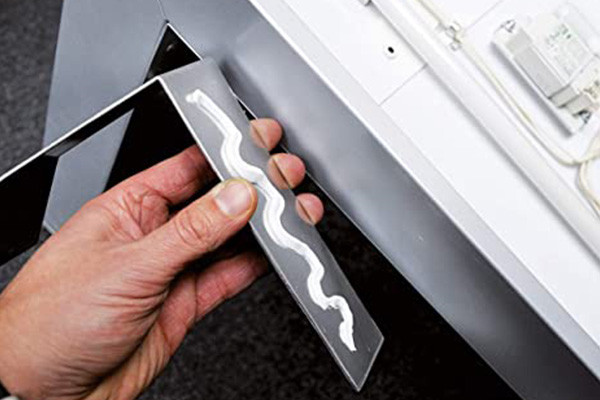
Some tips to keep in mind when using appliance adhesive include:
- Always wear gloves to protect your hands.
- Make sure to use the adhesive in a well-ventilated area.
- Avoid getting the adhesive on your skin or eyes. If this occurs, seek medical attention immediately.
- Store the adhesive in a cool, dry place, and seal the container tightly after each use.
The Role of Appliance Adhesive in Preventing Leaks and Damage
Appliance adhesive is critical in preventing leaks and damage in various appliances, such as refrigerators, dishwashers, washing machines, and air conditioners. Here are some of how appliance adhesive helps prevent leaks and damage:
- Sealing Joints and Gaps: Appliances typically have various joints and gaps where two surfaces meet, such as refrigerator seams or washing machine edges. Appliance adhesive seals these joints and cracks, preventing water or air from escaping and reducing the risk of leaks.
- Bonding Components: Appliances often have multiple components that need to be securely bonded together, such as the tub and door of a washing machine or the coils and housing of an air conditioner. Appliance adhesive bonds these components, preventing them from separating and causing damage.
- Withstanding Vibration and Movement: Appliances may experience significant vibration and movement during operation, which can cause components to shift or become loose. Appliance adhesive bonds parts together and absorbs vibration, reducing the risk of damage or failure.
- Resisting Temperature and Moisture: Appliances are often exposed to extreme temperatures and moisture, which can weaken or corrode components over time. Appliance adhesive provides a barrier against these elements, protecting components and reducing the risk of damage.
- Enhancing Structural Integrity: By providing a robust and durable bond between components, appliance adhesive can improve the overall structural integrity of an appliance. This can help prevent damage from occurring in the first place and extend the appliance’s lifespan.
By using high-quality adhesive and ensuring proper application, manufacturers can help to ensure that appliances remain leak-free and damage-free over their lifespan.
Repairing Appliances with Appliance Adhesive: Step-by-Step Guide
Here is a step-by-step guide to help you with the process:
- Identify the problem: Before you start any repairs, you must identify the problem with your appliance. Look for any cracks or leaks that need to be fixed.
- Choose the suitable adhesive: Once you have identified the problem, you must choose the right adhesive for the job. There are a variety of adhesives available, so make sure to choose one specifically designed for the type of appliance you are repairing.
- Clean the area: Before applying the adhesive, clean the area thoroughly. Remove any dirt or debris and dry the area thoroughly.
- Apply the adhesive: Apply the adhesive according to the manufacturer’s instructions. Make sure to apply enough adhesive to cover the entire area that needs to be repaired.
- Let it dry: Allow the adhesive to dry completely before using the appliance again. This may take several hours, so be patient and don’t rush the process.
- Test the repair: Once the adhesive has dried, test the repair by using the appliance as you normally would. If the repair was successful, the appliance should work just as well as before the problem occurred.
- Monitor the repair: Keep an eye on the repaired area to ensure the adhesive is holding up. If you notice any issues, you may need to reapply the adhesive or seek professional help.
Following these steps, you can successfully repair your appliances with appliance adhesive and save money.
How Appliance Adhesive Can Be Used in Industrial Settings
Here are some ways appliance adhesive can be used in industrial settings:
- Bonding metal and plastic components: Appliance adhesive can bond metal and plastic components in various industrial applications. For instance, it can assemble automotive parts, electronic devices, and household appliances.
- Sealing joints and gaps: Appliance adhesive can seal joints and cracks between two or more surfaces. This is especially useful in industries that require air or water-tight seals, such as in manufacturing pipes, containers, and tanks.
- Repairing plastic parts: Appliance adhesive can restore broken or cracked plastic pieces, such as those found in machinery or equipment. This can help extend the life of these parts, reducing the need for expensive replacements.
- Improving product design: Appliance adhesive can enhance product design by allowing for the bonding of materials that were previously difficult to join. This can enable manufacturers to create more lightweight, durable, and efficient products.
Overall, appliance adhesives can be versatile for bonding and sealing materials in various industrial applications. Its ability to bond plastics and metals makes it ideal for many industries, including automotive, electronics, and manufacturing.
Tips for Maintaining Your Appliances with Appliance Adhesive
Maintaining your appliances is crucial to ensure they remain in good working condition and last longer. Here are some tips for keeping your devices with appliance adhesive:
- Regularly clean your appliances: Cleaning your appliances regularly can help prevent the build-up of dirt, grime, and other substances that could damage the appliance over time. Use a soft cloth and mild detergent to clean the surface of your appliances.
- Inspect for damages: Check your appliances regularly for signs of wear and tear or damages. Look for cracks, leaks, and loose parts. If you find any damages, repair them immediately to prevent further damage and ensure your appliances function correctly.
- Apply adhesive: Appliance adhesive can repair damages, seal gaps, and reinforce weak spots in your appliances. It can also be used to secure loose parts or components. Make sure to use the appropriate type of adhesive for the material of your appliance.
- Follow manufacturer’s instructions: Always follow the manufacturer’s instructions when using adhesive on your appliances. This will help ensure that the adhesive is applied correctly and will effectively repair or strengthen the appliance.
- Schedule regular maintenance: Consider scheduling routine maintenance for your appliances. This can help identify any potential problems before they become major issues and can help extend the life of your appliances.
Following these tips and using appliance adhesive when necessary can help maintain your appliances and prevent costly repairs or replacements.
How Appliance Adhesive Can Be Used in the Automotive Industry
Appliance adhesives can be used in various applications in the automotive industry. Here are some ways in which appliance adhesive can be used:
- Bonding of components: Appliance adhesive can be used to bond different components of an automobile, such as glass, plastic, metal, and rubber. This type of adhesive can provide strong and durable bonds that can withstand the harsh conditions of the road.
- Sealing and waterproofing: Appliance adhesive can seal and waterproof different parts of an automobile, such as doors, windows, and sunroofs. This can help prevent leaks and protect the car’s interior from moisture and other elements.
- Noise reduction: Appliance adhesive can reduce noise and vibrations in an automobile. This adhesive can be applied to areas such as the floor, doors, and engine compartment to reduce noise and provide a more comfortable driving experience.
- Repair of bodywork: Appliance adhesive can be used to repair bodywork on an automobile. This adhesive can fill gaps, cracks, and other imperfections in the bodywork, providing a strong and durable repair.
- Assembly of components: Appliance adhesive can be used to assemble components of an automobile, such as the dashboard and interior trim. This can provide a cleaner and more aesthetically pleasing look than traditional mechanical fasteners.
Appliance adhesive can benefit the automotive industry, improving durability, noise reduction, and a cleaner look. It is essential to select the appropriate type of adhesive for each application and to follow the manufacturer’s instructions for proper use.
Appliance Adhesive and Its Role in Aerospace Technology
Here are some ways in which appliance adhesive can be used in aerospace technology:
- Bonding of composite materials: Appliance adhesive can be used to bond composite materials, which are widely used in aerospace technology due to their lightweight and high strength. The adhesive can provide a solid and durable bond between composite materials and other substrates, such as metals.
- Repair of aircraft structures: Appliance adhesive can be used to repair aircraft structures that have been damaged or have suffered from fatigue, such as wings and fuselages. The adhesive can provide a strong and durable repair that can withstand the stress and strain of flight.
- Assembly of components: Appliance adhesive can be used to assemble various components of an aircraft, such as the interior panels and cabinetry. The adhesive can provide a clean and aesthetically pleasing look compared to traditional mechanical fasteners.
- Sealing and waterproofing: Appliance adhesive can seal and waterproof various parts of an aircraft, such as windows, doors, and hatches. This can help prevent leaks and protect the aircraft’s interior from moisture and other elements.
- Thermal and vibration management: Appliance adhesive can manage thermal and vibration issues in aerospace technology. The adhesive can provide a thermal barrier between different components, reducing heat transfer and vibrations and providing a more comfortable and stable flight.
Overall, appliance adhesive can provide many benefits in aerospace technology, including improved durability, weight reduction, and performance. It is essential to select the appropriate type of adhesive for each application and to follow the manufacturer’s instructions for proper use.
The Importance of Proper Storage for Appliance Adhesive
Proper storage of appliance adhesive is crucial for maintaining its quality and effectiveness. Here are a few reasons why:
- Maintaining Adhesive Properties: An appliance adhesive is designed to bond different materials together, and its effectiveness depends on its chemical properties. Moisture, heat, or light exposure can alter these properties, resulting in a weaker bond or even complete failure. Proper storage helps to maintain the adhesive’s properties, ensuring that it performs as intended.
- Preventing Contamination: Appliance adhesive can easily be contaminated by dust, dirt, or other substances, affecting its effectiveness. Proper storage helps prevent contamination, ensuring the adhesive remains pure and free of any foreign matter.
- Extending Shelf Life: Appliance adhesive typically has a limited shelf life, and proper storage can help to extend its useful life. By minimizing exposure to environmental factors, the adhesive can remain stable and effective for longer, reducing the need for frequent replacements.
- Saving Money: Improper storage of appliance adhesive can lead to waste and extra costs. For example, if the adhesive is exposed to moisture and loses its effectiveness, it may need to be replaced. This can result in additional fees and downtime. Proper storage can help to prevent these issues and save money in the long run.
Following the manufacturer’s recommendations for storage and handling, you can ensure that your adhesive performs as intended and avoids unnecessary costs or downtime.
Using Appliance Adhesive for Medical Equipment Repairs
Appliance adhesive can sometimes be a valuable tool for repairing medical equipment, but it is essential to exercise caution and follow proper safety protocols when using any adhesive in a medical setting.
Here are a few things to keep in mind when using appliance adhesive for medical equipment repairs:
- Safety first: Before using any adhesive on medical equipment, it is essential to ensure the equipment is completely turned off and unplugged to prevent electrical shock or injury.
- Choose the right adhesive: Not all adhesives are suitable for use in medical settings, and it is essential to choose an adhesive that is approved for medical use and is compatible with the materials you are bonding with. Check the manufacturer’s instructions and consult a professional if unsure which adhesive to use.
- Follow proper application procedures: These procedures ensure a strong and durable bond. Follow the manufacturer’s instructions carefully, and apply the adhesive only to the areas that require bonding.
- Allow sufficient time for curing: Appliance adhesive typically requires time to cure and reach its maximum strength. Be sure to allow enough time for healing before using the equipment again.
- Monitor the equipment: After applying the adhesive, monitor it closely to ensure it is functioning correctly and holding up under regular use. If there are any issues, discontinue use and consult with a professional.

The Role of Appliance Adhesive in Construction and Building Materials
Appliance adhesive is essential in construction and building materials by providing a robust and reliable bond between various materials. This adhesive is designed to bond appliances, fixtures, and building components to different surfaces, such as wood, concrete, metal, and plastic.
One of the primary applications of appliance adhesive in construction is installing countertops, cabinets, and other fixtures in kitchens and bathrooms. It is also used to attach doors and windows to frames and to install insulation in walls and ceilings.
In addition, appliance adhesive is used to manufacture building materials, such as composite panels, laminates, and engineered wood products. The adhesive provides a durable and long-lasting bond between the different material layers, ensuring the final product’s structural integrity.
The benefits of using appliance adhesive in construction and building materials include its ability to withstand extreme temperatures, moisture, and vibrations. It also provides excellent bonding strength, flexibility, and impact resistance, which makes it an ideal choice for high-stress applications.
Overall, appliance adhesive is crucial in modern construction and building materials. It plays a vital role in ensuring the safety, durability, and longevity of structures and components while providing significant cost savings through reduced maintenance and repair costs.
How Appliance Adhesive Can Help in Electronics and Circuit Board Repairs
Appliance adhesive, also known as electronic adhesive or circuit board adhesive, can be a valuable tool in repairing electronics and circuit boards. Here are some ways in which appliance adhesive can help:
- Bonding Components: Appliance adhesive can be used to bond various components of electronic devices together. For example, it can attach components like resistors, capacitors, and transistors to a circuit board.
- Sealing and Insulating: Appliance adhesive can also be used to seal and insulate electronic components. It can protect members from moisture, dust, and other contaminants that can cause damage or malfunction.
- Conductive Adhesive: Some types of appliance adhesive are conductive, meaning they can create a conductive pathway between two components. This can be useful in repairing broken or damaged traces on a circuit board.
- Heat Resistant: Appliance adhesive is designed to be heat-resistant, which is essential in electronics repairs. It can withstand the heat generated by electronic components without melting or losing its adhesive properties.
It can help to bond components, seal and insulate electronic devices, and even create conductive pathways. When using appliance adhesive, it’s essential to choose the right type of adhesive for the specific application and follow the manufacturer’s instructions for proper use and safety precautions.
The Benefits of Using Appliance Adhesive for DIY Jewelry Projects
Appliance adhesive can also be helpful for DIY jewelry projects in several ways. Here are some benefits of using appliance adhesive for DIY jewelry:
- Strong Bond: Appliance adhesive is designed to provide a strong bond between materials, essential in jewelry making. It can securely attach beads, stones, and other embellishments to various jewelry components, such as chains, findings, and clasps.
- Versatile: Appliance adhesive is versatile and can be used with various materials commonly used in jewelry making, including metal, glass, plastic, and more.
- Clear and Invisible: Many appliance adhesives dry clear and are virtually invisible, which is essential when working with jewelry. It can provide a professional and seamless finish to jewelry pieces.
- Waterproof and Heat Resistant: Appliance adhesive is often waterproof and Heat resistant, which makes it suitable for use in jewelry that may be exposed to water, Heat, or other harsh environments.
- Easy to Use: Appliance adhesive is generally easy to use and does not require special tools or equipment. It can be applied with a small brush or toothpick and dries quickly.
How Appliance Adhesive Can Be Used in Arts and Crafts
Appliance adhesive, silicone adhesive, or sealant can be versatile in arts and crafts. Here are some ways it can be used:
- Creating 3D designs: Appliance adhesive can be used to create 3D designs by layering them onto a surface. This can be particularly effective when working with materials like paper or fabric.
- Adding texture: Appliance adhesive can be applied to a surface and left to dry to create a textured effect. This can be useful when creating mixed media projects or adding depth to a painting or drawing.
- As a glue: Appliance adhesive can attach different materials together. It is particularly effective when working with non-porous materials like metal or plastic.
- Sealing and waterproofing: Appliance adhesive can seal and waterproof surfaces, making it ideal for creating outdoor sculptures or decorations.
- Filling gaps and cracks: Appliance adhesive can fill holes or cracks in a surface, creating a smooth finish. This can be particularly useful when working with wood or ceramics.
When using appliance adhesive in arts and crafts, it is essential to follow the manufacturer’s instructions carefully, as different types of adhesive may have other drying times and application methods. Working in a well-ventilated area and wearing gloves to protect your skin is also necessary.
Appliance Adhesive: A Versatile Tool for Creative Projects
Appliance adhesive, also known as silicone adhesive or sealant, is a versatile tool that can be used for a wide range of creative projects. Here are some examples of how it can be used:
- Sculpture: Appliance adhesive can create sculptures by layering them onto a surface or building them up in layers. The adhesive can be shaped and molded while wet, making it ideal for creating intricate details.
- Jewelry: Appliance adhesive can create unique jewelry pieces by attaching beads, stones, or other embellishments to a base. The adhesive dries clear, making it an excellent choice for creating transparent or translucent jewelry.
- Mixed media art: Appliance adhesive can attach different materials, making it ideal for mixed media art. It can attach paper, fabric, metal, and other materials to a surface.
- Home decor: Appliance adhesive can create unique home decor items, such as candle holders, vases, and picture frames. It can be used to attach decorative elements to a base or to fill in gaps and cracks in a surface.
- Costume design: Appliance adhesive can create costumes by attaching different materials together. It can attach fabric, feathers, and other embellishments to a base.
Different types of adhesive may have other drying times and application methods. Working in a well-ventilated area and wearing gloves to protect your skin is also necessary. With the proper techniques and precautions, appliance adhesives can be a valuable tool for creative projects.
Testing Appliance Adhesive for Strength and Durability
Regarding appliance adhesive, strength, and durability determine the bond’s longevity between the two surfaces. Various tests can be performed to evaluate the strength and durability of appliance adhesive, and here are some of the most common methods:
- Tensile Strength Test: This test involves pulling apart two surfaces bonded with adhesive. The force required to break the bond is measured, and this gives an indication of the adhesive’s tensile strength.
- Shear Strength Test: In this test, a force is applied parallel to the surface of the bonded materials, causing them to slide against each other. The energy required to break the bond is measured, and this gives an indication of the adhesive’s shear strength.
- Peel Strength Test: This test involves peeling apart the bonded surfaces at a specific angle. The force required to break the bond is measured, and this gives an indication of the adhesive’s peel strength.
- Impact Resistance Test: This test evaluates the adhesive’s ability to withstand sudden impacts or shock loads. It involves dropping a weighted object onto the bonded surfaces from a specific height and measuring the damage caused.
- Environmental Exposure Test: This test evaluates the adhesive’s resistance to environmental factors such as temperature, humidity, and chemicals. The bond is exposed to different environments and assesses its performance over time.
- Fatigue Test: This test involves subjecting the bonded surfaces to repeated cyclic loading, simulating the stresses an appliance may experience during use. The adhesive’s ability to withstand fatigue is evaluated by measuring the number of cycles required to cause failure.
By performing these tests, manufacturers can identify potential weaknesses and improve the adhesive’s performance, leading to better, longer-lasting appliances.
Conclusion: Why Appliance Adhesive is a Must-Have for Every Household
Appliance adhesive is a must-have for every household due to its versatility and effectiveness in various applications. This adhesive can repair and bond multiple household appliances, including refrigerators, washing machines, and dryers.
It is also helpful in DIY projects and home repairs, such as fixing loose tiles, repairing broken furniture, or sealing gaps and cracks in walls and floors. Furthermore, appliance adhesive is designed to withstand extreme temperatures and provide long-lasting bonds, making it ideal for use in high-stress environments.
Appliance adhesive is easy to use and requires no special skills or tools, making it accessible to anyone who needs it. It comes in various forms, including tapes, sealants, and glues, allowing users to choose the best option.
In summary, having appliance adhesive in your household can save you time, money, and effort by enabling you to repair and maintain your appliances and household items effectively. Its versatility and ease of use make it a must-have for anyone looking to keep their home in excellent condition.



